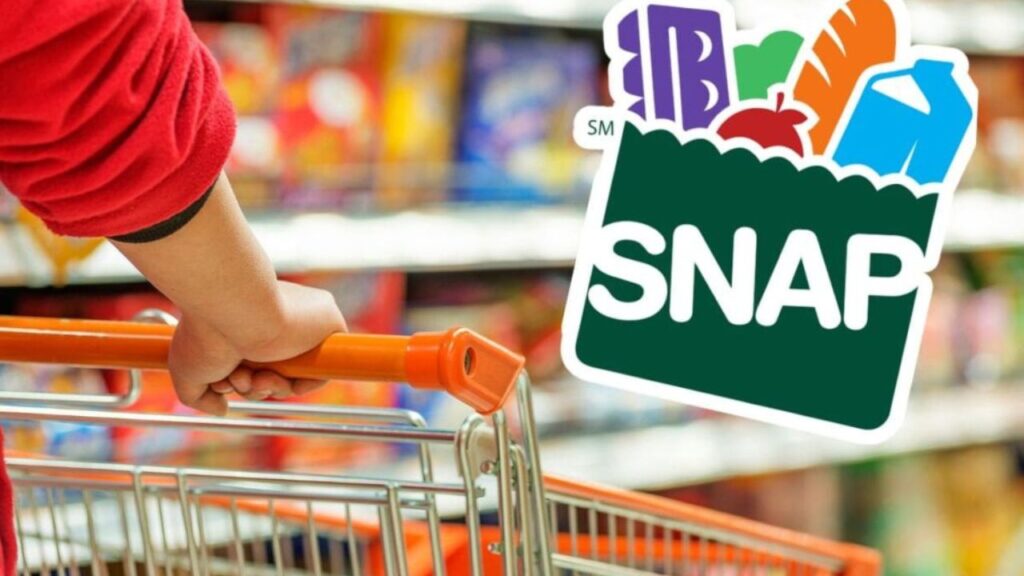Thousands of Americans will see a financial boost this April as the Supplemental Nutrition Assistance Program (SNAP), commonly known as Food Stamps, begins issuing new payments. Eligible households can receive up to $292 per family member, helping ease the burden of food costs. However, it’s important to understand how and when these benefits are distributed and what they can be used for.
Let’s dive into the SNAP payment schedule for April 2025, what items are eligible, and how recipients can make the most of this support.
What Are SNAP Food Stamps and Who Can Receive Them?
SNAP is a federal assistance program managed by the U.S. Department of Agriculture (USDA) that helps low-income individuals and families buy the food they need for good health. While not everyone qualifies, those who do receive monthly benefits on an Electronic Benefits Transfer (EBT) card.
This benefit isn’t a cash payment that can be spent freely—it’s strictly limited to purchasing eligible food items at participating retailers, including major grocery chains, local supermarkets, and some farmers’ markets.
Eligible recipients may receive up to $292 per person, depending on household income, family size, and specific state guidelines.
What Can SNAP Benefits Be Used For?
SNAP funds can be used to purchase:
- Fruits and vegetables
- Meat, poultry, and fish
- Dairy products
- Breads and cereals
- Snack foods and non-alcoholic beverages
- Seeds and plants to grow food at home
Prohibited purchases include:
- Alcohol or tobacco products
- Vitamins, medicines, and supplements
- Hot, prepared foods
- Household items, pet food, or cosmetics
Which States Are Sending SNAP Payments This Week?
Each state has its own SNAP disbursement schedule. Here’s the official SNAP payment calendar for April 2025, showing the days when each state will issue benefits to eligible residents’ EBT cards:
| State | Payment Dates (April 2025) |
|---|---|
| Alabama | April 4–23 |
| Alaska | April 1 |
| Arizona | April 1–13 |
| Arkansas | April 4–13 |
| California | April 1–10 |
| Colorado | April 1–10 |
| Connecticut | April 1–3 |
| Delaware | April 2–23 |
| District of Columbia | April 1–10 |
| Florida | April 1–28 |
| Georgia | April 5–23 |
| Guam | April 1–10 |
| Hawaii | April 3–5 |
| Idaho | April 1–10 |
| Illinois | April 1–10 |
| Indiana | April 5–23 |
| Iowa | April 1–10 |
| Kansas | April 1–10 |
| Kentucky | April 1–19 |
| Louisiana | April 1–23 |
| Maine | April 10–14 |
| Maryland | April 4–23 |
| Massachusetts | April 1–14 |
| Michigan | April 3–21 |
| Minnesota | April 4–13 |
| Mississippi | April 4–21 |
| Missouri | April 1–22 |
| Montana | April 2–6 |
| Nebraska | April 1–5 |
| Nevada | April 1–10 |
| New Hampshire | April 5 |
| New Jersey | April 1–5 |
| New Mexico | April 1–20 |
| New York | April 1–9 |
| North Carolina | April 3–21 |
| North Dakota | April 1 |
| Ohio | April 2–20 |
| Oklahoma | April 1–10 |
| Oregon | April 1–9 |
| Pennsylvania | April 3–14 |
| Puerto Rico | April 4–22 |
| Rhode Island | April 1 |
| South Carolina | April 1–10 |
| South Dakota | April 10 |
| Tennessee | April 1–20 |
| Texas | April 1–28 |
| Utah | April 5, 11, 15 |
| Virgin Islands | April 1 |
| Vermont | April 1 |
| Virginia | April 1–7 |
| Washington | April 1–20 |
| West Virginia | April 1–9 |
| Wisconsin | April 1–15 |
| Wyoming | April 1–4 |
Once the funds are loaded onto your EBT card, you can use them immediately at approved retailers.
How to Check Your SNAP Balance and Payment Date
To stay informed about your SNAP benefits:
- Log into your state’s EBT portal or mobile app
- Call the number on the back of your EBT card
- Visit your local Department of Human Services (DHS) office for help
Knowing your state’s disbursement date ensures you can plan grocery shopping and budgeting more effectively.
Final Thoughts
SNAP benefits are a vital lifeline for millions of Americans, especially during times of high inflation and economic uncertainty. With up to $292 per person available this April, eligible families can stretch their grocery budgets and focus more on healthy food choices.
If you’re already approved, check your state’s payment date to know when your EBT card will be funded. If you’re not yet receiving SNAP, it may be worth applying through your local DHS office or state SNAP website.
FAQs:
Who qualifies for SNAP benefits?
Eligibility is based on income, family size, and other factors. Each state may have slightly different requirements, but SNAP generally targets low-income households.
Can I spend SNAP benefits at any grocery store?
No. Only retailers that are approved to accept EBT payments can process SNAP purchases. Most major chains and many local stores do qualify.
Is the $292 payment per household or per person?
Up to $292 can be received per eligible person in a household, depending on income and other factors.
